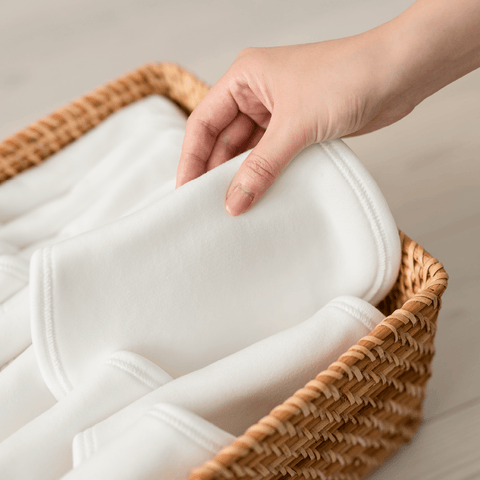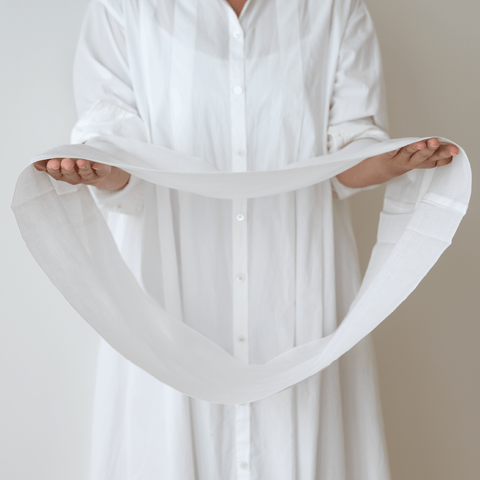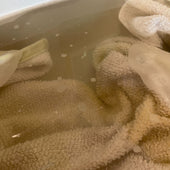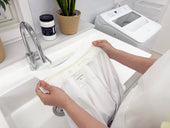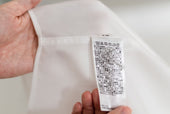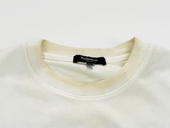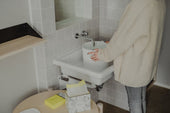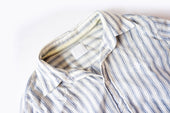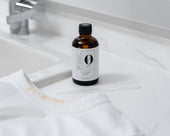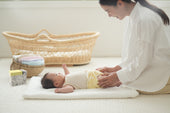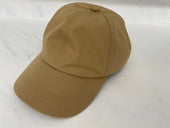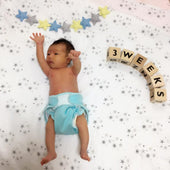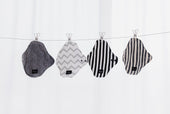This article provides a detailed summary of its causes, how to deal with it, and how to care for it.
Do cloth diapers cause rashes? Is it hard to get a rash?
First of all, it doesn't necessarily mean that you're more likely to get a rash just because you're using cloth diapers (disposable diapers).Regardless of the type of diaper material or the situation, the basic causes of diaper rash, The method of care is the same.
If you know what to do, you should be able to deal with diaper rash effectively.
Now, let's take a closer look at the causes of diaper rash.

Diaper rash symptoms and characteristics
Let's take a closer look at the causes and symptoms of diaper rash.Diaper rash is a dermatitis that causes inflammation in the area that comes into contact with the diaper .
Babies' skin is thinner than adult skin and produces less sebum to prevent skin from drying out, making them more susceptible to rashes.
The skin on the buttocks becomes reddish, or red eczema appears in spots, causing itching and pain.
If it gets bad, you may even get sores.
Areas where inflammation is particularly common include the buttocks, around the anus, the inside of the thighs, and around the stomach where diapers come in contact.
What causes diaper rash?
The cause is often a combination of factors, such as the material that comes in contact with the skin, the structure of the diaper (breathability), and the compatibility of the baby's skin.Let's look at the specific causes one by one.
Irritation when poop/pee comes into contact with the skin
First of all, the main cause of diaper rash is the digestive enzymes in poop and ammonia contained in urine.Ammonia in urine becomes alkaline over time and can irritate your baby's delicate skin.
Furthermore, E. coli and digestive enzymes contained in poop can also cause inflammation.
In particular, soft stools contain a lot of digestive enzymes, so be especially careful when you have diarrhea .
Stuffiness inside the diaper
"Stuffy" diapers are also one of the main causes.The inside of the diaper, which is warmed by the baby's body temperature, is always damp from sweat and urine.
This leaves the skin feeling soft and susceptible to irritation.
Newborns and young babies tend to defecate more often, and their poop tends to be looser because they are breastfed or breastfed.
As a result, the inside of the diaper remains damp for a long time.
This problem should gradually improve as your baby gets older, defecates less frequently, and his poop becomes less watery.
Rubbing with diaper
The baby moves around anyway.Skin that is sensitive due to the above causes, such as poop, urine, and moisture , will be further damaged directly by rubbing against the surface of the diaper.
Diaper rash is particularly likely to occur around the stomach and gathered areas where the diaper is likely to come into contact with the skin, as well as around the buttocks and inner thighs where the skin is weak and sensitive.
Pay close attention to the size and tightness of the diaper.

How to prevent and treat diaper rash
Next, let's take a look at measures to prevent diaper rash.Check the size and tightness of the diaper
The more strongly the diaper touches the skin, the more likely it is to be damaged by rubbing, which can lead to diaper rash.However, diapers that are too big can cause leaks.
Make sure the size and tightness are just right for your baby.
Change diapers immediately after defecating
In any case, it is essential to change the diaper immediately after defecating .Minimize the amount of time your baby's skin is in contact with urine and poop , and keep it from getting stuffy as much as possible. Change the diaper immediately.
Clean baby wipes without rubbing!
Do not damage your skin by rubbing with baby wipes
When changing diapers, be careful not to leave dirt on your baby's bottom.However, be careful not to scrub your skin too hard with wipes, as this can worsen the symptoms of diaper rash .
gently with lukewarm water
Wipe gently with a cotton ball dampened with lukewarm water, allowing the dirt to flow away without using too much force.After removing the dirt, be sure to pat (do not rub) the moisture with gauze or a soft towel.
Be especially gentle on areas of your skin that are rough due to diaper rash.
We also recommend washing and showering when changing diapers!
When you are at home, we also recommend washing your hair in the bath or shower.Using soap when washing will strip your skin of its oils, so avoid using soap or use only a small amount.
After rinsing thoroughly, use a soft towel to gently press (do not rub) to remove moisture.
Thorough moisturizing care
Good options include oily moisturizers, baby creams, Vaseline, and baby oil.The oily layer protects your skin from external stimuli such as dryness and rubbing against diapers.
``Dry the diaper thoroughly'' before putting it on
If you put on a diaper with moisture remaining after cleaning the diaper's bottom (even after moisturizing it), it will cause stuffiness.The key is to dry it thoroughly.
Dry the baby with a fan, being careful not to let it get cold.
It is a good idea to avoid wearing diapers for a short period of time, or to have some panty-free time to let your baby dry, and to prevent rashes.

Doesn't suit your skin? Various diaper materials
The basic causes and countermeasures have been examined so far, but there is also the compatibility between the diaper material and the baby's skin .If the diaper rash does not get better, one option is to take the plunge and change the diaper .
Do the fibers become hard when washing cloth diapers?
When it comes to diaper materials, ``the soft feel of cotton in cloth diapers'' is an important point to consider.On the other hand, depending on the material and weave of cloth diapers, the fibers may become hard after being washed several times. It may become stiff and rough and may irritate your skin.
If you use it as is, it may rub against your skin and cause diaper rash.
Here are some ways to reduce stiffness!
- After making your selection, shake and pull before drying.
The sleeping cotton fibers stand up and prevent roughness.
- The sun and the wind blow me away.
The fibers become soft.
- After drying, if the surface feels rough to the touch, knead or pat it a little to soften it.
- If you have one, you can use a dryer to naturally massage the fibers with air and heat.
- Fabric softeners are also effective as a means of softening fibers.
However, since the ingredients contained in detergent create a water-repellent effect, the absorbency of the diaper may decrease somewhat.
Consider the balance between the amount of urine and absorption capacity.
Even disposable diapers made of dry material should not be left unattended.
The material that comes into contact with the skin of disposable diapers is made of synthetic fibers that keep them dry.Compared to cloth diapers, it should be easier to prevent stuffiness after urinating .
However, disposable diapers are smooth, highly absorbent, and odor-resistant, so it can be difficult to notice when your child urinates, and it can take time to change the diaper.
If your skin remains in contact with urine for a long time, After all, your skin will be damaged.
Whether using disposable diapers or cloth diapers, changing diapers immediately after excretion is the basic way to prevent diaper rash.
Be careful: Could it be dermatitis, not diaper rash?
One thing to be aware of is that there is a possibility of another skin problem that is very similar to diaper rash and difficult to distinguish.The most common baby diapers are Inflammation caused by fungi such as candida dermatitis.
Characteristics include redness in areas that are not directly in contact with the diaper, and a clear border between inflamed and non-inflamed areas.
It can also be made worse by topical ointments. See your doctor early
Candida dermatitis cannot be cured with regular diaper rash treatments, and steroid-based ointments used to treat rashes can make it worse.It may also be difficult to diagnose on your own, such as when the condition occurs in conjunction with diaper rash.
Do you see any of the above characteristics or find it difficult to get rid of inflammation? If you feel this, please see a dermatologist as soon as possible.
Take proper measures and avoid diaper rash!
We have summarized the causes and treatments for diaper rash.It can both prevent diaper rash and provide care if it occurs.
Do it right and say goodbye to diaper rash.
Well then, both mom and baby, have a happy childcare!



